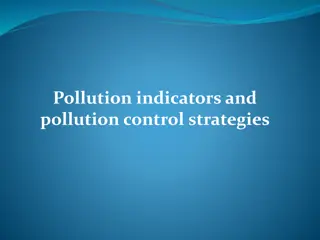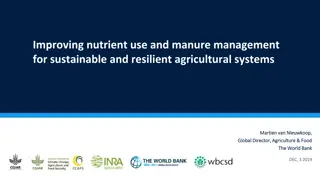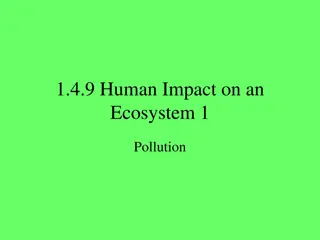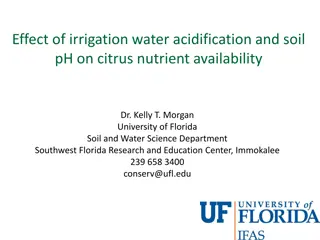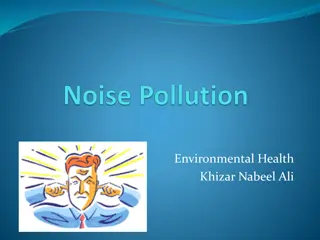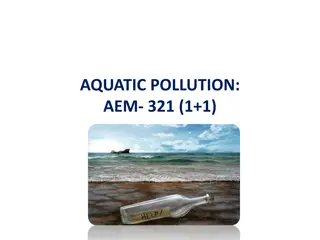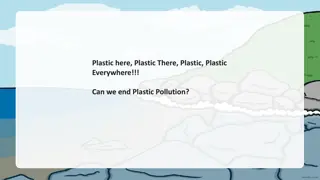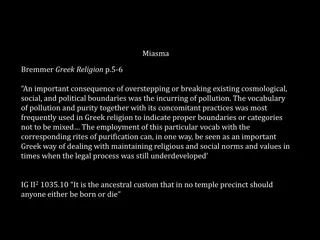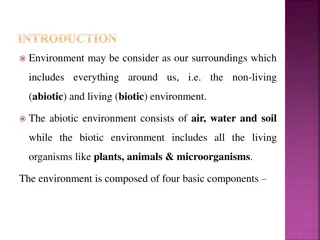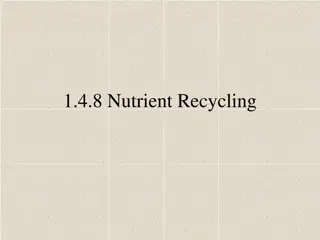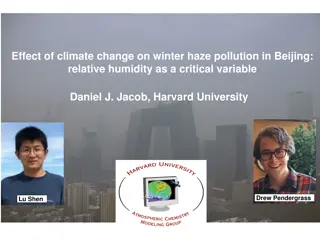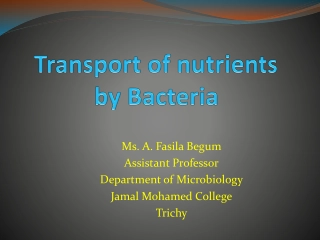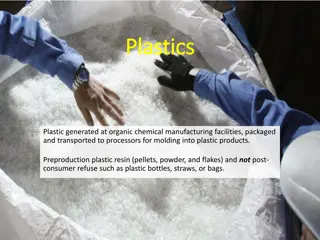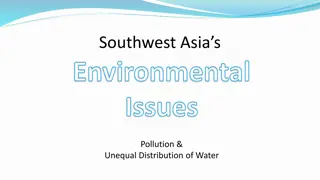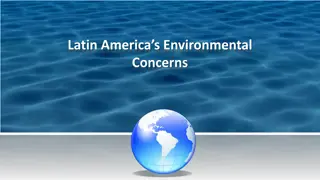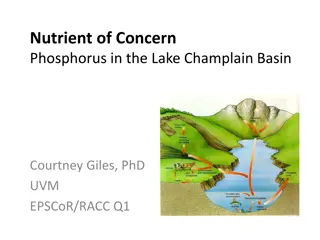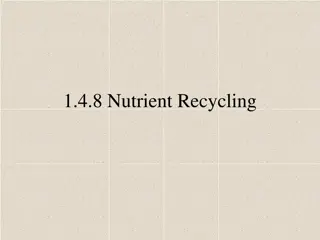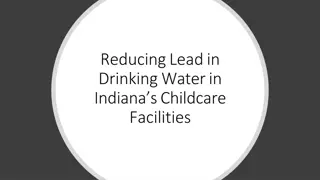Understanding Nutrient Pollution and Its Impact on the Environment
Nutrient pollution, characterized by the excess input of nitrogen and phosphorus into water and air, is a significant environmental issue with far-reaching consequences. It can lead to toxic algae blooms, dead zones, economic losses, and adverse effects on human health. The causes of nutrient pollution range from agricultural practices to urban activities, necessitating proper management strategies to mitigate its effects. Globally, nutrient pollution has impacted numerous coastal systems, leading to waterborne infections, economic losses, and disruptions in marine ecosystems.
Download Presentation

Please find below an Image/Link to download the presentation.
The content on the website is provided AS IS for your information and personal use only. It may not be sold, licensed, or shared on other websites without obtaining consent from the author. Download presentation by click this link. If you encounter any issues during the download, it is possible that the publisher has removed the file from their server.
E N D
Presentation Transcript
BIOGEOCHEMICAL CYCLING EXAMPLES Unit 6.2
BIOGEOCHEMICAL CYCLING EXAMPLES 1) Nutrient Pollution 2) Agricultural Importance 3) Phosphorus and Nitrogen 4) CZ Function and Dynamics
Nutrient Pollution Definition: The addition of excess nutrients, mainly nitrogen and phosphorus, into the water or air. EPA claims that nutrient pollution is one of America's most widespread, costly and challenging environmental problem.
Nutrient Pollution Effects Environmental effects Toxic Algae Blooms Dead Zones/Hypoxia Economic effects Treating Impaired Drinking Water Tourism Losses Property Value Decreases Human health effects Nitrate Toxicity; Especially Impacts the Young and Old (e.g. blue baby syndrome) Decreased Air Quality Exposure to Toxic Algae
Nutrient Pollution Around the World This World Resources Institute identified 762 eutrophic and hypoxic coastal systems impacted around the world Between 1970 and 1990 over 20,000 cases of serious waterborne infections were reported each year because of harmful algal blooms along the coast of the Black Sea. In addition over $2 billion (USD) worth of fish catch was lost due to eutrophication and a half-billion in tourism damage resulted In the sea of Japan, a huge boom of Nomura s jellyfish, occur every summer as they feed on the abundance of plankton which result from the increased nutrients. The jellyfish impact commercial fisheries by competing with fish for food and fowling boat motors and nets
Nutrient Pollution Causes Wastewater Sewer/septic systems Urban Stormwater, Yard Fertilizers/Waste, Pet waste, and Phosphate Containing Detergents Agriculture Soil, fertilizer, and manure runoff and infiltration Photo: NOAA
Agricultural Importance Nutrient Management Proper application and timing of fertilizer Control livestock and irrigation waste Conservation tillage Soil Management Install buffers Plant cover crops Photo: Martin Pettitt
Agricultural Wastewater The California Agricultural Water Stewardship Initiative defines agricultural wastewater as the excess water that runs off a field at the low end of furrows, border strips, basins, and flooded areas during surface irrigation Water running of fields often has high concentrations of pesticides, herbicides, nutrients and other chemicals that could pollute surface or ground water Capture and reuse of agricultural wastewater is a good example of a best management practice or BMP
Major Nutrient Pollution Elements NITROGEN PHOSPHORUS Primary Water Impacts Groundwater & Near- shore Ocean Freshwater systems only Primary Agricultural Sources Fertilizer Manure Can Exist as a Gas YES NO Cycling Characteristics Air, Water, and Soil Water and Soil Important Compounds Nitrite, Nitrate, Ammonia, and Ammonium Phosphate
CZ Function and Dynamics Impacts of hydrology on a given area Infiltration Runoff Environmental impacts and physical characteristics impacting weathering of minerals and soils Soil creation Nutrient transformation





